
Chiếu sáng trong truyền hình
(English)
Television Lighting
Television is a means of changing patterns of light into electrical
signals for storage or transmission and then recreating those patterns on a
screen. In order to do this well, the television camera must be presented with
properly illuminated scenes. The three important considerations are overall
level, contrast range, and color temperature.
Level
Lighting levels for television are generally set by adjusting the
incident light, or the light striking the subject. The unit of measure for
incident light is the foot candle, which is the amount of light produced by a
standard candle at a distance of one foot. Lighting measurements are made
using an incident light meter, which has a white plastic cover over the
sensing element and a logarithmic scale calibrated in foot candles. To

measure the useful incident light for television, the meter is held near the
subject and pointed toward the camera.
The minimum acceptable level for color television depends on the
ability of the lens to transmit light to the camera, the sensitivity of the pickup
tube or chip, and the amount of depth of field you need. For high-quality
pictures you need something between fifty and two hundred foot candles.
Most cameras can be operated in light ranging from the minimum up to ten
thousand foot candles, or fairly bright sunlight. Where lighting conditions
fall outside this range, steps must be taken to bring the lighting level into
line with the capabilities of the camera. With too little light, additional
lighting must be added. With too much, special neutral density filters must
be used on the camera.
Absolute rock bottom
You'll see cameras advertised as 2 LUX or 4 LUX cameras. 2 LUX is
equal to .19 foot candles. 4 LUX is about .37 foot candles. I was suspicious,
so a number of years ago I set up an ordinary candle one foot away from a
white square on a black background. I tested two cameras. The first was a
popular CCD camera requiring four LUX for minimum illumination. The
second was a broadcast camera using Saticon pickup tubes. At a nominal
one foot candle the CCD camera produced 40 IRE units of video, but the

amount of noise in the picture was very objectionable. At four foot candles
the CCD camera produced 100 IRE units with an acceptable noise level. The
broadcast camera produced 20 IRE units at one foot candle with the "boost"
set at 18 dB. At four foot candles, it produced 46 dB at 0 boost and 95 dB at
9dB boost. At four foot candles the broadcast picture was obviously superior
to the picture from the consumer camera.
The difference at one foot candle is essentially the willingness to
tolerate more noise in the CCD camera, giving it more apparent sensitivity
under extremely low light situations. To mask some of the noise at low light
levels, consumer cameras often use a setup, or black level, of zero IRE,
rather than the 7.5 IRE broadcast standard. Some cameras that automatically
boost the signal in low light situations can also be run in manual mode
where you can control how much boost you want to use.
Lighting levels of five to fifteen foot candles are common in homes,
while office settings tend to range from fifty to sixty foot candles. Keeping
the reservations in the preceding paragraph in mind, consumer camcorders
should have plenty of light for acceptable pictures in either setting.
Contrast

Contrast refers to the difference in brightness from the darkest parts of
a scene to the brightest.
Useful contrast for NTSC television is determined by the amplitude of
the video signal. The NTSC standard calls for a "peak to peak" amplitude of
one volt at 75 ohms impedance. Only seven tenths of a volt is used for the
luminance, or black and white part of the signal.
Common digital video signals are 24 bit color, with eight bits each for
red, green, and blue. This scheme allows for 256 individual shades from
dark to light for each color. Since 24 bit color allows for over sixteen million
colors, the limited number of shades available for each color isn't usually a
problem, although the luminance steps may be visible in monochromatic
scenes.
If there's too little contrast many receivers will produce a flat, grayish
picture. If there's too much contrast, details in the brightest and darkest parts
of the picture will be lost and the picture will look too harsh.
Since contrast is actually light reflected from the subject, it's measured
using a reflectance light meter. The meter is held near a variety of very light
and very dark parts of the subject and pointed toward each part of the subject
to be measured. The ideal contrast range for NTSC television is about

twenty to one. This corresponds to a difference of about four and one half f-
numbers between the darkest and brightest parts of the picture on a
reflectance light meter. In practice, actual contrast ranges are rarely
measured using a meter. A subjective analysis based on camera output is
generally sufficient.
Color Temperature
The third consideration is color temperature. Every source of light has
a characteristic color. This color is related to its "temperature." Lower color
temperatures tend to be red or orange while higher temperatures tend to be
green or blue. Color temperatures are measured in degrees Kelvin. Some
examples:
Color Temperature
Temperature ------------- Source ----------- ---Color
1950 ---------------------Candlelight -------- ----Orange
2870 ----------------Normal Incandescent --------Orange
3200 --------------Most Photo or TV Lights -------Orange


![Đề cương ôn tập Bản đồ du lịch [năm hiện tại]](https://cdn.tailieu.vn/images/document/thumbnail/2025/20250809/dlam2820@gmail.com/135x160/53061754884441.jpg)


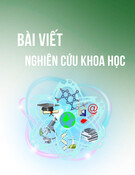





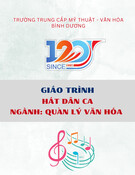



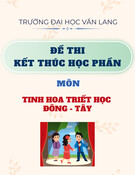
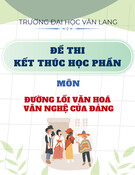
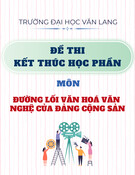
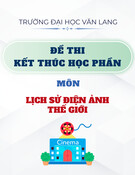
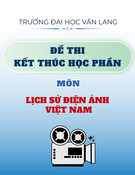

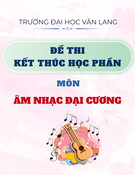
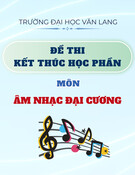


![Câu hỏi ôn tập Kỹ thuật quay phim và chụp ảnh [chuẩn nhất]](https://cdn.tailieu.vn/images/document/thumbnail/2025/20250711/kimphuong1001/135x160/488_cau-hoi-on-tap-ky-thuat-quay-phim-va-chup-anh.jpg)
